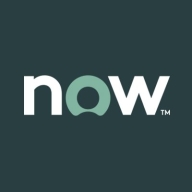

Teradata and ServiceNow Customer Service Management are leaders in data handling and customer service management, respectively, each having distinct strengths. Teradata leads in handling complex analytical workloads with high scalability, while ServiceNow shines in customer-focused cloud operations.
Features: Teradata features robust parallel processing, advanced data management, and high compression capabilities, making it suitable for large data volumes and complex analytics. ServiceNow offers ease of use, seamless cloud-based operations, and strong integration capabilities that enhance the digital experience for both employees and customers.
Room for Improvement: Teradata could enhance its cloud capabilities, reduce costs, and improve support for unstructured data. ServiceNow could benefit from greater customization options, clearer pricing structures, and improved integration with IVR systems.
Ease of Deployment and Customer Service: Teradata, primarily deployed on-premises with some cloud options, is noted for its technical support but struggles with pricing and scalability. ServiceNow excels in cloud deployment, offering excellent customer service and support, making it ideal for customer-focused solutions.
Pricing and ROI: Teradata is priced higher, reflecting its data handling strengths and offering substantial ROI in large-scale analytics projects. ServiceNow is also premium priced, highlighting its comprehensive feature set for customer service management, each catering to different organizational goals.


Customer Service Management groups key applications and capabilities into scalable packages that can grow with you as your needs change.
Teradata is a scalable data analytics platform designed to meet enterprise demands for large-scale data management and processing, focusing on performance, scalability, and security for complex query executions.
As a leading data warehousing solution, Teradata integrates advanced analytics enabling organizations to derive insights from massive datasets. It supports high-volume data workloads with its architecture optimized for analytical queries. Users benefit from its robust scalability, allowing seamless expansion as data grows. Teradata's SQL engine is compatible with a wide range of data types, ensuring flexibility in data analysis. With advanced security measures, it protects sensitive data across various environments, providing peace of mind to users handling critical information.
What are the most important features of Teradata?Teradata is widely used in industries like finance, telecommunications, and healthcare, where data-driven decisions are critical. Companies leverage its robust analytics capabilities to enhance customer experiences, streamline operations, and ensure compliance with regulatory requirements. In these sectors, quick access to data insights can significantly impact competitive advantage.
We monitor all Customer Experience Management reviews to prevent fraudulent reviews and keep review quality high. We do not post reviews by company employees or direct competitors. We validate each review for authenticity via cross-reference with LinkedIn, and personal follow-up with the reviewer when necessary.